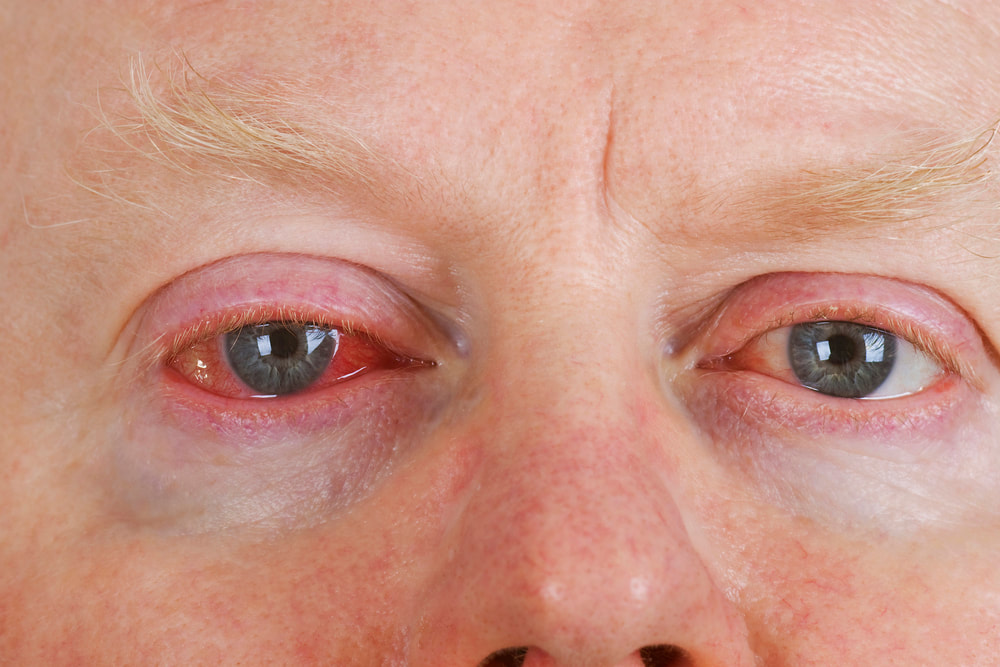What causes bloodshot eyes?Several things can cause bloodshot eyes. Although not always the case, in many instances, the cause is clear. Below are common causes of bloodshot eyes. Allergies: Allergies can lead to eye symptoms, such as redness, itching, and watery eyes. Pink eye: Pink eye involves an inflammation of the white part of the eye. One of the main symptoms is bloodshot eyes. Dry eye syndrome: Dry eyes can occur for a variety of reasons, such as a side effect of medication, hormonal changes, and medical conditions. In addition to bloodshot eyes, symptoms may include irritation and pain. Foreign body: Anytime someone gets something in their eye, such as sand or dirt, it can lead to a bloodshot eye. Scleritis: Scleritis involves inflammation of the sclera, which is the white part of the eye. It is associated with certain autoimmune diseases, such as lupus and rheumatoid arthritis. Additional symptoms may include blurred vision, sensitivity to light, and increased tearing. Subconjunctival hemorrhage: A subconjunctival hemorrhage is a ruptured blood vessel in the eye. Although the condition sounds serious, it is usually nothing to worry about. When should you see a doctor?Although bloodshot eyes are typically nothing to be too concerned about, you should see a doctor in the following instances:
TreatmentsTreatments for bloodshot eyes are often effective in removing the redness. Consider some options below. Treat the underlying cause. Treating the underlying cause of red eyes is your best bet. For example, if you have eye allergies, consider using antihistamines to prevent allergy symptoms. Use eye drops. There are different types of eye drops on the market that help remove the red from your eyes. Be sure to follow the directions. These drops should only be used on occasion and sparingly as they can exacerbate red eyes if used too much. Apply a cool compress. A cool compress helps constrict the blood vessels and may decrease the appearance of bloodshot eyes. Apply a cool compress several times a day. Give your eyes a break. Give your eyes a break from things that may cause irritation. For instance, wear glasses for a few hours and take contact lenses out. Also, take a break from digital devices to prevent or reduce eye strain, which can contribute to bloodshot eyes. Wash your hands often. Keeping your hands clean reduces the risk of an eye infection that may cause red eyes. Also, avoid rubbing your eyes, which can also increase irritation and your risk of infection. Use artificial tears. If you have dry eyes, using artificial tears may eliminate the symptoms, including redness. Are daily eye drops safe?One of the main treatments for bloodshot eyes is using eye drops, but are they safe to use every day? According to the American Academy of Ophthalmology, you can use eye drops up to four times a day, but if you use them more often, get drops that do not contain preservatives.
If you have questions about bloodshot eyes, we are happy to help. Also, if you would like to ask whether an appointment with one of our eye doctors would be appropriate at this time, call our office at 508-746-8600. Comments are closed.
|
EYE HEALTH BLOGCategories
All
Archives
July 2024
|
|
Kadrmas Eye Care New England
55 Commerce Way, Plymouth, MA 02360
14 Tobey Road, Wareham, MA 02571 133 Falmouth Road (Rt 28), Mashpee, MA 02649 |
Phone Number:
1-508-746-8600 Hours: Monday through Friday — 8 AM – 4:30 PM |


 RSS Feed
RSS Feed
